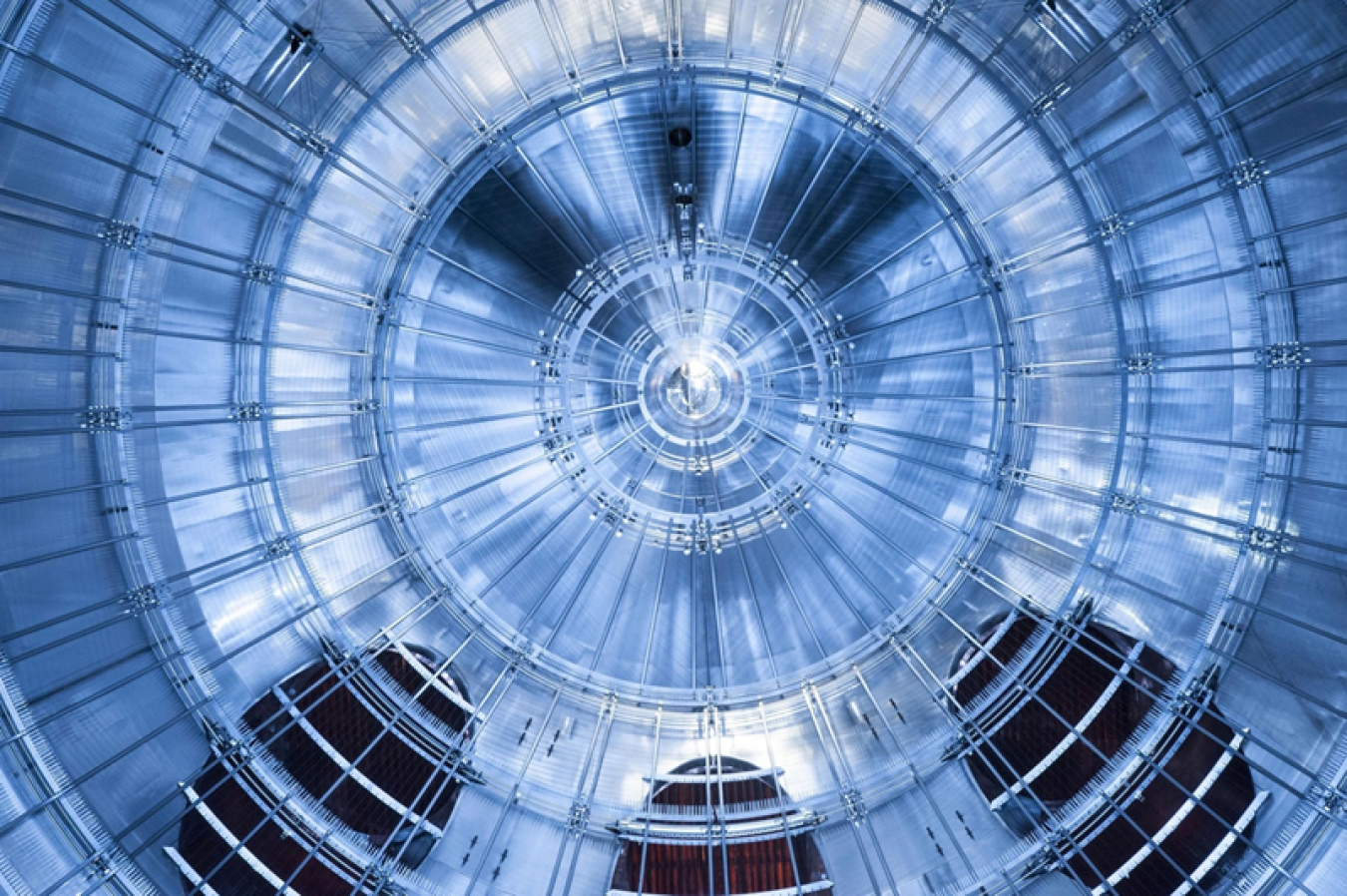An international group of nuclear scientists has restricted the neutrino mass with a new level of sensitivity.
June 13, 2022
The Science
Neutrinos are the most abundant particles that have mass in the universe, but that mass is so small that scientists have not been able to measure it. To obtain that measurement, an international scientific collaboration designed and constructed the KArlsruhe TRItium Neutrino (KATRIN) experiment in Germany. KATRIN uses tritium, an isotope of hydrogen, for neutrino mass experiments. Tritium decays to a helium nucleus, an electron, and an electron-type antineutrino. Scientists can determine the neutrino mass by measuring the kinetic energy of the electrons released as tritium decay. Recently, the KATRIN experiment released its latest results on the neutrino mass measurement. The experiment established the most stringent upper limit of the neutrino mass in a laboratory measurement.
The Impact
Scientists do not know the actual mass of neutrinos, but the value affects the universe’s evolution. This new upper limit of the neutrino mass from this direct measurement does not depend on any assumptions of models of the evolution of the universe. Future improvements in this measurement will constrain these models. This will allow scientists to better understand our universe. The result is also the first time a laboratory, model-independent measurement has the physics sensitivity that reached a key threshold neutrino-mass limit called the “sub-electronvolt.”
Summary
The KATRIN experiment recently released its latest result of the neutrino-mass measurement. The experiment established an upper limit of 0.8 eV/c2, or 1.4×10-33 grams. This is the most stringent laboratory limit of the neutrino mass from tritium beta-decay measurements. This limit highlights a remarkedly light neutrino mass, and future improvements with more data will allow scientists to better understand the evolution of our universe. This result is the first to reach a sensitivity below 1 eV/c2 (“sub-electronvolt”). The researchers’ analysis of the beta-electron energy spectrum for the signature of a neutrino mass used an advanced statistical method called Bayesian analysis, which required considerable computational resources provided by the high-performance computer Cori at the Department of Energy’s National Energy Research Scientific Computing Center (NERSC). The researchers reported the results of this analysis along with those obtained by other collaborators of the experiment, demonstrating consistent results.
In addition to analyzing the neutrino-mass data sets, U.S. scientists designed and built the silicon detector system, furnished the data acquisition system, checked the integrity of the acquired data, assayed construction materials to reduce radioactive backgrounds, and measured the energy states to which tritium molecules decay independently.
Contact
Alan Poon
Nuclear Science Division, Lawrence Berkeley National Laboratory
AWPoon@lbl.gov
Funding
This work was supported by the Department of Energy, the European Research Council, the Helmholtz Association, the German Federal Ministry of Education and Research, the Helmholtz Alliance for Astroparticle Physics, and the Helmholtz Young Investigator Group, the German Research Foundation, the Max Planck Society of Germany, the Czech Republic Ministry of Education, and the Russian Federation Ministry of Science and Higher Education.
Publications
Aker, M., et al. (KATRIN Collaboration), Direct neutrino-mass measurement with sub-electronvolt sensitivity, Nature Physics 18 2, 160-166 (2022). [DOI: 10.1038/s41567-021-01463-1]
Related Links
Berkeley Lab Researchers, Computational Facilities Play Key Role in Barrier-Breaking Neutrino Mass Measurement, Berkeley Lab News Center story
NERSC Resources Help Achieve Milestone in Neutrino Research, NERSC News
Neutrino’s Mass Smaller Than Previously Known, Carnegie Mellon University Department of Physics news
A new upper limit on the mass of neutrinos, MIT News
UNC physics researchers contribute to barrier-breaking neutrino mass measurement, University of North Carolina, Chapel Hill Physics news
A new upper limit on the mass of neutrinos, University of Washington News Blog

